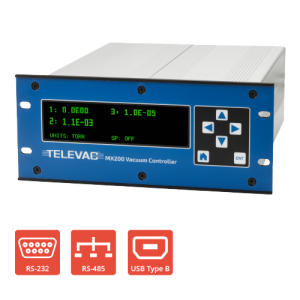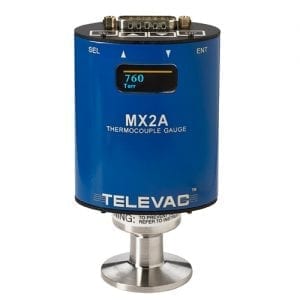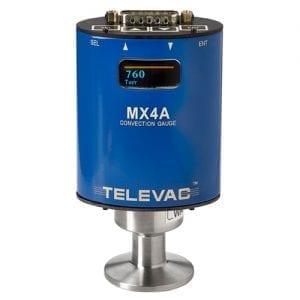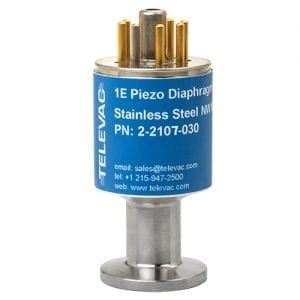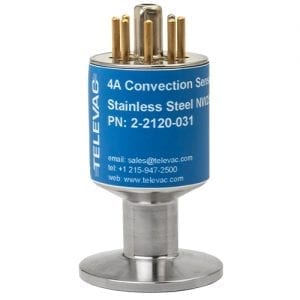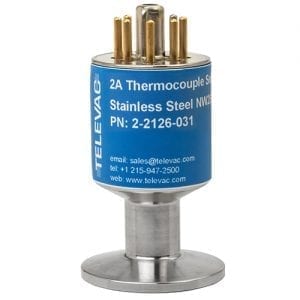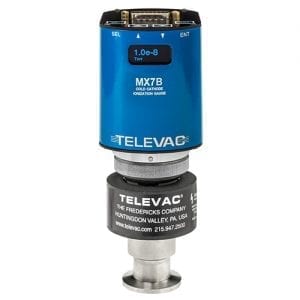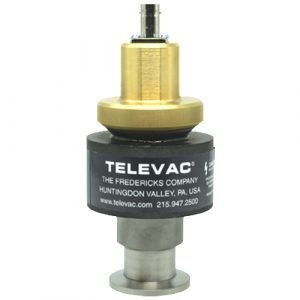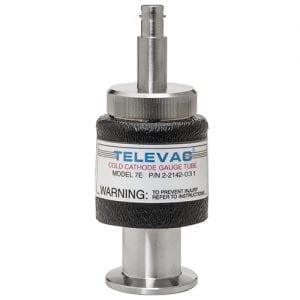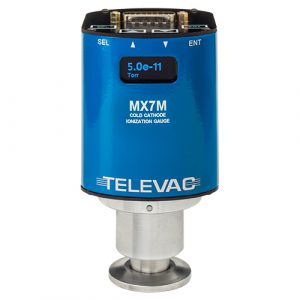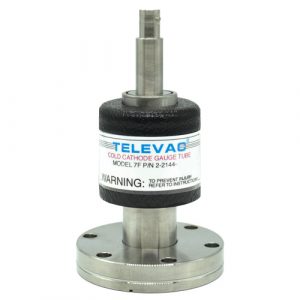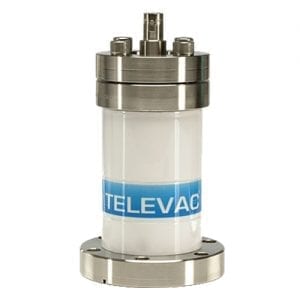Torrなどの変換係数に対応した簡易真空測定単位変換器です。
操作方法。標準表記または科学表記(例:1e-4)のいずれかを使用して変換するフィールドに値を入力します。
ご存じですか?Televac® コントローラとアクティブゲージは、Torr, mbar, Pascal, mTorr/microns などの測定単位を選択できます。
The torr is a non-SI unit of pressure defined as 1/760 of an atmosphere. It was named after Evangelista Torricelli, an Italian physicist and mathematician who discovered the principle of the barometer in 1644.
torrはmmHgと密接な関係があり、2つの値はほぼ同じです。しかし、torrは正確な量であるのに対し、mmHgは局所的な重力や温度の変化によるものではないので、2つの圧力単位を同じものとして扱うべきではありません。
時が経つにつれ、水銀の760ミリが「標準」気圧とみなされるようになりました。気圧の単位(水銀の1ミリ、1ミリHgとも書かれています)は、トリチェリに敬意を表して命名されました。
A micron refers to a micrometer of mercury. As vacuum technology advanced, it became necessary to have a more precise vacuum measurement unit than the mm of Hg. The mm of Hg was divided into 1000 smaller parts which were called microns. The word micron means a one millionth of a meter.
ミリトルは高真空測定に使用される非常に小さな圧力ユニットで、トルの1/1000倍の圧力ユニットです。1 mTorrは0.13332 Paに相当します。
The millitorr is not a commonly used pressure unit but tends to be used in scientific research or specialized manufacturing fields where very low vacuum pressures are measured.
Millimeters of mercury, torr, and micron are three units of measure typically associated with the vacuum furnace industry while other fields of vacuum use pascals (Pa or kPa).
Millibar is a metric unit of pressure, derived directly from the bar pressure unit, and represents 1/1000 of a bar. In SI units 1 mbar equals 100 pascals. The millibar is commonly used to measure barometric pressure for meteorological applications as well as high and ultra-high vacuum ranges.
For pressure, the SI system’s basic unit is pascal (Pa), which is N/m2 (Newton per square meter, while Newton is kgm/s2).Unlike other units such as psi, kgf/cm2, in H2O and in Hg the pressure value that the pascal unit represents is unchanging no matter where and how it is used. The pascal unit is completely independent of ambient temperature, local gravity and media density.
A kilopascal is equal to 1000 pascal. The pascal unit is inconveniently small for many purposes outside of vacuum measurement, therefore the kilopascal (kPa) is more commonly used in everyday applications like meteorology and tire pressure.
Standard atmosphere is commonly used as a reference value for the average atmospheric pressure at sea level. It was originally defined as the pressure exerted by 760 mm of mercury at 0 °C and standard gravity (g = 9.80665 m/s2).
However, standards have since been updated and in 1982 the International Union of Pure and Applied Chemistry (IUPAC) recommended that for the purposes of specifying the physical properties of substances, “standard pressure” should be precisely 100 kPa (1 bar).
バーはメートル法による圧力の単位ですが、国際単位系(SI)の一部としては認められていません。1バールは100,000Paに相当し、現在の地球上の平均気圧(海抜)よりもわずかに低い。
The bar and the millibar were introduced by the Norwegian meteorologist Vilhelm Bjerknes, who was a founder of the modern practice of weather forecasting.
Pound-force per square inch (PSI) is a unit of pressure commonly used in the United States and the United Kingdom. It measures the pressure exerted by one pound-force applied to an area of one square inch. PSI is widely used in various fields, including automotive, HVAC, and industrial applications, to quantify pressure in both liquids and gases.
Millimeters of mercury (mm Hg) is a non-SI unit of pressure traditionally used in medicine and atmospheric science. It measures the pressure exerted at the base of a mercury column exactly one millimeter high. The mm Hg unit is often used to measure blood pressure and barometric pressure. Its value can vary slightly depending on local gravity, but it is generally treated as equivalent to the torr.
Inches of mercury (in Hg) is a non-SI unit of pressure commonly used in meteorology and aviation to measure atmospheric pressure. It represents the pressure exerted by a mercury column one inch in height at 0 °C under standard gravity. Like mm Hg, the value of in Hg can vary with changes in temperature and gravity, making it a context-dependent measure.
Inches of water (in H2O) is a unit of pressure commonly used in HVAC systems, fluid mechanics, and other engineering fields. It measures the pressure exerted by a water column one inch high at 4 °C under standard gravity. This unit is particularly useful for measuring low pressures and is often employed to gauge air duct pressure and differential pressure in manometers.






